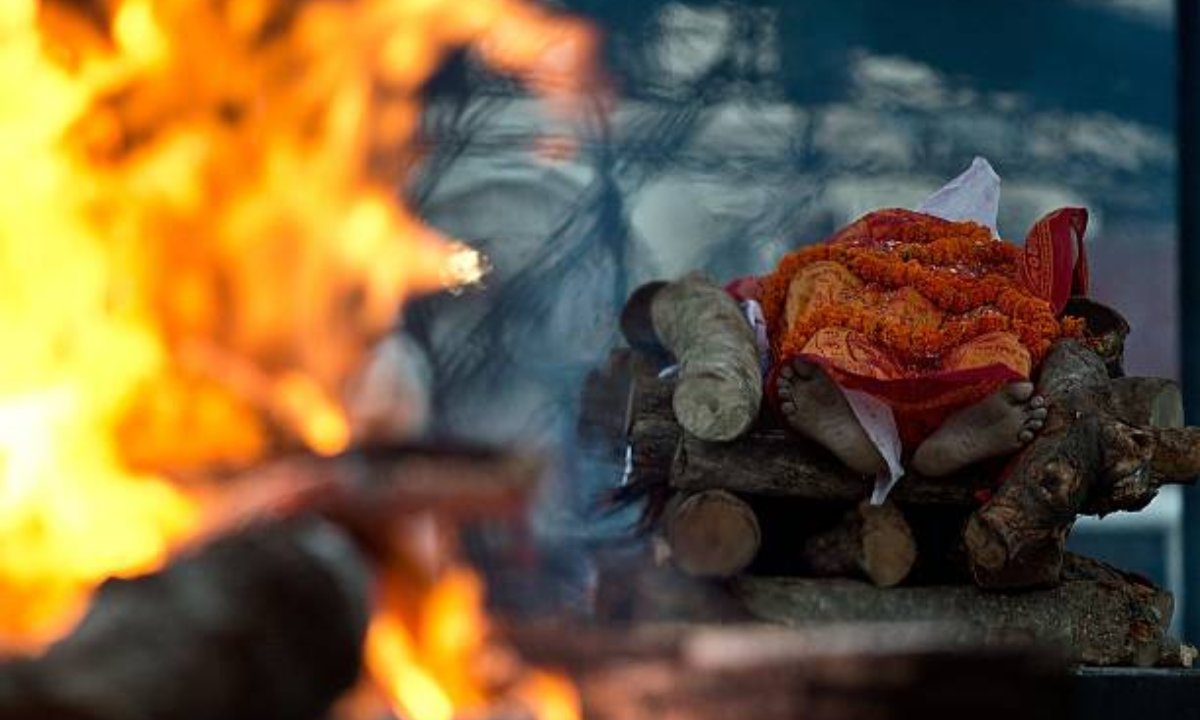In the community of Madhava Brahmins, life includes many such death-related rituals. These rituals are for different reasons; they help to honour the dead and help the family. In this article, we will provide an insight into the usual way in which Madhava Brahmins follow practices and customs after a person is dead, outlining each major step.
Importance of Death Rituals

Some cultures, such as the Madhava Brahmins, practice rituals in connection with death, expressions of profound spiritual belief. They help transport the soul from the physical world to the afterlife. From Hindu philosophies of life, death, and rebirth, the Madhava Brahmin practices stand on ancient traditions and scriptures.
Immediate Rituals After Death
The Final Breath
Family members perform immediate rituals when death occurs. Arranging the body in a respectful way (usually with it washed and adorned with sacred things like flowers and a sacred thread meaning purity) is the first. For many people, the family turns out to be the last people to see the deceased and to bid farewell to their lives.
Declaration of Death
A senior member or priest recites appropriate chants denoting the family’s move of the body and ‘officiate’ the death.
Transportation of the Body
To keep the dignity of the deceased and the way of Madhava Brahmins, the body of the deceased is transported to the cremation ground. Carrying the body on a simple bamboo or wood stretcher wrapped in a simple white cloth is often a normal part of this. Chants that combine expressions of grief, then expressions of joy in a life lived, come close behind the mourners.
The Harishchandra Ghat Electric Crematorium: Its Role.
Choice of Cremation Site
A decision as to where the cremation would take place is a critical part of the Madhava Brahmin death rituals. The modern facilities and ritual practice followed by Harishchandra Ghat Electric Crematorium make it a preferred choice. Not only is this crematorium conducive to a respectful funeral, but it’s also a site that a lot of families would definitely want to consider since it offers the best of tradition and modernity.
Rituals at the Crematorium
Once you reach Harishchandra Ghat Electric Crematorium there are many rituals to occur before the cremation services in Bangalore. The family performs a series of prayers to invoke blessing on the departed soul and the body is put onto the pyre. Usually only the eldest son or closest relative will light the pyre while it symbolizes the end of earthly ties and the beginning of the soul’s journey.
Post-Cremation Rituals
Collection of Ashes
After cremation, which can take several hours, the family collects what’s left. This is a sacred moment, that this is the last time the soul leaves the brain and goes to the physical world. Usually turns out in a holy pot.
Immersion Ceremony
Madhava Brahmins immerse ashes in a sacred river or a body of water. This is done to help honour the deceased and to try to get the soul on its path to the afterlife. Performing this rite in holy rivers is convenient for many families.
The Mourning Period
Duration of Mourning
In the course of the rituals, there is a period of mourning, of a defined or indefinite term, usually of ten to thirteen days in Madhava Brahmin tradition. This is the time when family and close relatives refrain from celebrating happy events while remembering and honouring the deceased by praying and reflecting.
Daily Rituals During Mourning
There were specific daily rituals every day of the mourning period. As in Hindu philosophy, there is a constant focus on the cyclic nature of existence and family members perform prayers and scriptures that recall life and death.
Annual Remembrance
Shradh Ceremony
The Shradh ceremony is an essential ritual, which is performed annually. This is a time for family members to remember, or as we say in Swedish, shillings, to honour the person lost. The family comes together, does the required rituals, and gives food to the dead. In the Madhava Brahmin tradition, it is believed that these offerings allow the soul to rest and proceed in its journey.
Connecting with Ancestors
The Shradh ceremony takes place during the connection with the ancestors to celebrate their lives and ask for the blessing of the dead. It is a tradition filled with communal events where people tell the story of the dead person, and people also share memories.
Closure and Moving Forward
The Role of Rituals for Healing
For example, after death, the numerous rituals that are carried out at Harishchandra Ghat Electric Crematorium go beyond a simple farewell to the deceased; they also function as a necessary healing process for the family who is bereaved. Structure during a chaotic time, they help and reestablish community bonds.
Continuation of Traditions
These rituals often involve younger generations to keep traditions alive. In doing so, they are passing down the important cultural practices and teaching of what life and death are important for the Madhava Brahmin community.
Conclusion
Centrally, the death rituals of Madhava Brahmins who observe this ritual are complete with their beliefs, customs, and values and invariably, include the eminent stalod of burning known as Harishchandra Ghat Electric Crematorium.
They not only pay respect to those who have died; they comfort those who remain; and they reinforce, as well, the community and spiritual ties that are so intrinsic to their traditions. The ritual process has each step that helps the soul of the deceased to its rightful place, guides the living through their grief, and honours the circle of life.
At Beleiv for Cremation Services in Bangalore, we provide a modern and compassionate way to offer end-of-life care, so parents and families have an option to care for their loved ones with respect and dignity. We serve to create a calming environment amid difficult times through services that cater to individual needs, from eco-friendly cremation options and assistance through the grieving process.




